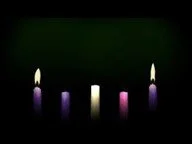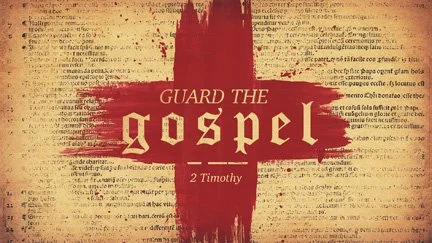Ezekiel 37:1-14
One of the greatest tragedies of the 1990s was the Rwandan genocide, when Hutus massacred Tutsis all across the country. In just 100 days, some 800,000 people were murdered. The Murambi Genocide Memorial Center is located near the town of Murambi in southern Rwanda. It is one of six memorial centers that commemorate the genocide.
Murambi was the site of a massacre. When the killing started, Tutsis in the area tried first to hide in a church. However, the bishop and the mayor led them into a trap when they sent them to the Murambi Technical School, claiming that French troops would protect them there. On April 16, 1994, about 65,000 Tutsis traveled to the school. Once they arrived, there was no food or water provided for them. This was so that the people would be too weak to resist when the Hutus came. The Tutsis were overrun on April 21. The Hutu militiamen murdered about 20,000 Tutsis at the school and almost all of those who managed to escape were killed the next day when they tried to hide in a nearby church. The government estimated the total number of deaths to be 50,000. The French soldiers dug several pits to serve as mass graves. Then a volleyball court was placed over the pit in an attempt to hide what had happened there. Only 34 people survived the massacre at Murambi.
The memorial was founded on April 21, 1995. The site contains approximately 50,000 graves. The school building is now a museum which contains the skeletons and mummified remains of some of the thousands of people who were killed there. I can only imagine visiting such a place. It sounds like the image I get in my mind of the valley of dry bones described in Ezekiel 37.
The background of this vision is found in the story of the Babylonian Exile. The Babylonians had conquered Judah, destroyed the Temple and much of Jerusalem, and carted off much of the surviving population back to Babylon, where they remained in Exile for seventy years, longer than the people wandered in the wilderness following the Exodus from Egypt. James A. Wallace writes, “Ezekiel’s vision is given for a people who have lost heart, who are suffering a death of the spirit, a living death in exile in a foreign land. Their temple has been destroyed, their holy city plundered, their leaders maimed and put in chains, their soldiers put to the sword, their young men and women either killed or dragged off into a foreign land. Ezekiel witnesses the soul of his people gradually wither and die, becoming as lifeless as a valley of dry bones.” And Rebecca A. Wright comments, “Perhaps at first it was not hard for the people to keep up their hopes that God would rescue them from Babylon; but as years piled up into decades and they continued to languish in captivity, despair began to replace hope. Finally, it had been too long; they considered themselves as good as dead?” And the question posed to Ezekiel in the midst of the valley of dry bones was, “Can these bones live?”
The obvious answer would be, “Of course not. What could possibly be more lifeless than dry bones?” Or Ezekiel might have taken the safe route and said, “I don’t know; I have no idea.” But instead, he answered, “Only you know, God.” And then God instructed Ezekiel to prophesy to the bones. He was to proclaim a message to a bunch of skeletons, bones spread out as far as he could see on all sides. Granted, sometimes I preach to people who are asleep, but I’ve never been asked to preach to people who were dead! But Ezekiel did as God asked him to do and spoke the words God gave him to speak.
And then, something amazing happened. There are over 80,000 posts about this story on Google, and many of them are works of art that portray this moment. There was a sound of rattling, and the bones began to come together, the toe bone connected to the ankle bone and so on. Then tendons and flesh appeared on the bones, and finally they were covered with skin. But the bodies were not alive yet. They were not breathing.
So the next instruction to Ezekiel from God was to prophesy to the breath. He was to call on the four winds to breathe into the bodies so that they might live. And breath entered into them, and they came to life and stood up on their feet. There is an interesting play on words here that we completely miss in the English translation. The Hebrew word ruach means breath, wind, and spirit. When the wind came and breathed into the bodies, they had breath and life. But the real life came from the Spirit of God.
James A. Wallace writes, “This breath is the spirit of God, the life-giving ruach God breathed into the first human creatures in the garden. This breath moves forth in the Lazarus story. This same breath was breathed into Jesus crucified, lifting him up to resurrection life, and touched us when the Spirit came upon us in baptism. This breath moves through the world, raising people into new life when all the odds are against it.”
Then God interprets for Ezekiel what this vision meant. He said that the bones represented the whole people of Israel, who felt that their bones were dried up and their hope was gone. God promised that he would open their graves and bring them up from them; he would bring them back to their homeland. Then they would know that he is the Lord. He would put his Spirit in them and they would live. The exiles who had given up on themselves and on God did have a future after all. God would rescue them and revive them and lead them back home. All they had to do was wait and be patient and trust that God would do what he promised to do.
Rebecca A. Wright states, “The source of their hope is not in their own abilities. It is not even in their prophet. The source of their hope is in the God who had not abandoned them, who continues to be with them even in their exile. God does not require the people to do anything here except to be the recipients of the proffered grace, to receive the Spirit of God within them.”
Lent is the perfect time to ask ourselves, “What are my spiritual dry bones? Where have I felt dead? Where have I given up hope?” We all go through periods when we have doubts or feel hopeless or depressed or afraid. We all have known what it means to be anxious. Katherine Amos writes in an essay on this passage, “What can your spiritual dry bones teach you?” Perhaps the first step is to acknowledge that there are dry bones in our spirits that we would like to live again. And then, I think the second step is to just be with those bones for a bit. Jane Anne Ferguson suggests, “Before we ask for new life, perhaps we can simply sit with our bones. Get to know them. Grieve with them. Let Spirit teach us.” When we sit with the dry bones for a moment, we take time to recognize that they are real and that they have left us feeling spiritually dead. And then we can pray over those dry bones and learn from them. We can accept that the only hope for new life is in the power of God’s Spirit. And we can begin to look for how and where we might receive the breath of life.
When I consider the dry bones in my own spirit, and open myself to the Spirit of God, I find that the most difficult part of it all is the waiting. I am not a patient person. I want God to breathe that new life into me now! I want to see God breathe new life into my churches as soon as possible! But for now, I wait. My soul waits. I may wait for seven days or seventy years. But as I wait, I have hope. And I pray and reflect on the words of Psalm 130:5-6: I wait for the Lord, my soul waits, and in his word I put my hope. My soul waits for the Lord more than watchmen wait for the morning, more than watchmen wait for the morning. Can you hear the rattling noise yet?










